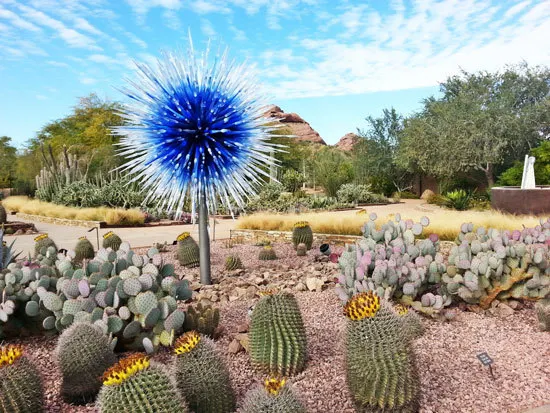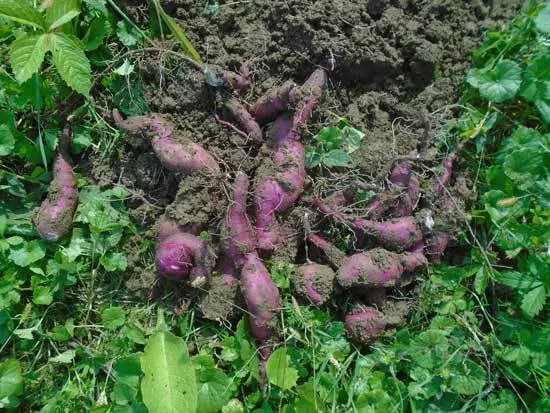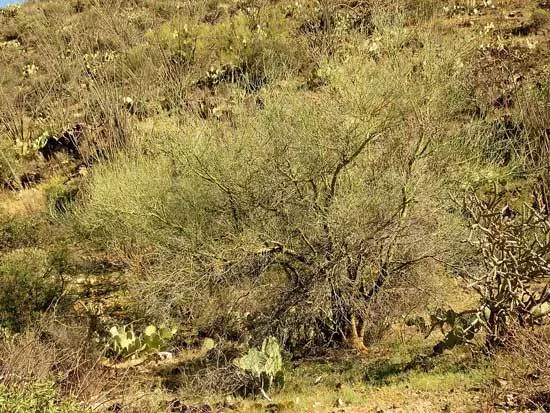Arizona is the kind of place that can give even the people known to have a green thumb a hard time. With temperatures soaring high, you might end up killing your plants more quickly than you usually would in most other places.
However, that doesn’t mean gardening in Arizona is impossible. If you do find a place with a beautiful space for the garden, there is still hope! You can grow fruits, vegetables, and even try your hands at landscaping.
- Gardening in Arizona – 10 Ultimate Tips
- 1. USDA Hardiness Zone
- 2. When Is the Right Season for Gardening?
- 3. Best Vegetables to Grow
- 4. Best Fruit Trees for Arizona
- 5. Best Ornamental Plants to Pick
- 6. Container Gardening Flaws You Cannot Ignore
- 7. Landscaping Mistakes You Should Keep at Bay
- 8. Picking A Spot for Gardening
- 9. Irrigation Methods
- 10. Setting the Bed Right
- Conclusion
Gardening in Arizona – 10 Ultimate Tips
1. USDA Hardiness Zone
This parameter is perhaps the first thing an avid gardener would look for. The map covers the whole of Arizona in 13 zones, and the levels range from 5a to 10b.

The moment you move to a city in Arizona, make sure that you check your city’s hardiness zone on the USDA hardiness zone map. Yuma is the hottest place to dwell in Arizona, and it has the mildest winters.
Flagstaff, on the other hand, is known for its cold winters amidst the desert climate. Knowing your winters can be the best thing to save your plants.
2. When Is the Right Season for Gardening?
The actual planting season varies from one vegetable to another. When you finalize the list of vegetables and other crops you wish to plant, you can get information about the planting calendar online.
The beginning of frost and last frost date is the details you need. With the first frost day starting around September in Flagstaff, it begins towards the end of November in Yuma.
The last frost date is in June in Flagstaff and the beginning of March in Yuma. Know the zone where your city falls and find the right planting season by staying away from the frost period.
You can, therefore, plan to start roughly in mid-March for vegetables like broccoli, until the last week of October. This would be your ideal planting window missing, which you should begin the next year.
3. Best Vegetables to Grow
Finding the right vegetables to grow in the arid regions of Arizona is critical. This ensures that you do not pick the wrong kind and get discouraged when the plan doesn’t thrive.
Here is a list of the best vegetables you can obtain a reasonable success rate in Arizona:
- Sweet potatoes – what better than this summer-loving crop to plant in Arizona! Summer is the ideal growing season, and you have the crop ready by the end of summer. With this, however, you can expect a harvest in fall while there are many that you can harvest throughout summer.
- Beans – asparagus beans is one of the most popular choices here. Vegetable production is at its peak when full summers begin.
- Okra – water the plant uniformly, and you can enjoy a healthy harvest throughout the summer.
- Peppers – these are some of the most popular picks for container gardening. Make sure that you accustom the sprouts to sunlight and expose the plant only for a few hours in a day, to begin with. Skipping this might cause the plant to go into a shock, which can affect the growth.

Tomatoes-these are versatile crops you can grow in all parts of Arizona. For a dry region like this one, smaller variants of tomatoes are the best to grow.
As with peppers, seedlings are started indoor, and slowly the plan can be taken outside.
4. Best Fruit Trees for Arizona
Besides vegetables, there are fruit trees that can grow without trouble in the dry regions of Arizona.
- Plums – Gulf Ruby, Santa Rosa, and Beauty are some of the most popular varieties of plums that grow. With these plants, you should be able to give a chill hour duration of 200-300 hours.
- Apples – varieties like Pettingill among the others can do well in Arizona deserts.
- Peaches – with 100-300 hours of chill hour requirements, Flordagrande, Flordaprince, and other varieties of peaches can thrive in Arizona. You would have the fruits ready for harvest in April.
- Citrus fruits are the easiest to grow in a hot region. Oranges, lemons, and mandarins can all do well in the heat without requiring chill hours.
- Apricots – requiring 400-500 hours of chill hour duration, most varieties of apricots grow well in the state.
5. Best Ornamental Plants to Pick
Gardening is not just about growing produce. If vegetable and fruit gardening is not for you, then you can always choose landscaping as a hobby.
There are several types of houseplants and ornamental outdoor plants you can grow in the state. Make sure that you check whether the plant is heat tolerant. Some of the plants might not survive in direct sunlight.
There are several heat-loving plants you can pick instead. Succulents are among the popular options for landscaping as they love the heat and do not require special care.
However, most succulents might succumb to chilly weather, and so you should make some arrangements to protect them during the winter.

Oleander, yellow bells, fairy duster, Blue Palo Verde, Bush morning glory, Blackfoot daisy, and Mexican thread grass are some of the popular choices for ornamental plants to adorn your garden.
6. Container Gardening Flaws You Cannot Ignore
Container gardening has numerous benefits, especially in places of extreme weather conditions like Arizona. When you grow plants in containers, you have the ease of moving the plant indoor or outdoor, into and away from a shady spot as desired.
This makes sure that your plant only gets the right amount of sunlight for the right duration each day. You can also protect the plants from the cold winters and frost.
Here are some common container gardening mistakes to avoid as a gardener in Arizona:
Ignoring the pot size – there is an optimal plant-to-pot ratio that you can find depending on the plant you choose. Make sure that you pick a pot that isn’t too big or too small.
This would let your plants thrive no matter what the weather is like outside. If the roots do not get enough room for growth, the stunted growth of the plant, on the whole, would also impact harvest.
Watering irregularities – overwatering is as big a problem as underwatering. Most of the plants grown in containers are easy to kill with both these measures.
When your climate gets dry, your plants might need more frequent watering than in the winters. While some of the vegetable plants like okra are hardy enough to tolerate dry soil, you should never leave the soil dry for too long.
At the same time, overwatering can lead to root rot. Choose a pot with good drainage to avoid flooding.
Missing fertilizers – whether it is a small area like a container or a large garden, you cannot ignore the fertilization needs of the plant.
You need to know the right season for applying the fertilizer and then the right type of fertilizer for the plant. Organic versions that can help preserve the taste of the fruit or vegetable are easy to find.
Not pruning – most vegetable shrubs need pruning. These are measures you take to trim down the growth in unwanted areas and thus let the plant focus its nutrients to the desired spots of growth.
It would help boost the growth of the plant and also increase the quality of the vegetables you grow.
7. Landscaping Mistakes You Should Keep at Bay
Relying too much on your automated irrigation system- even the best ones fail at times. External weather conditions or even the presence of dust and debris can affect the efficiency of the sprinkler system active in your garden.
To overcome this, you should do regular checks on your system and keep them active. This would make sure that your plants are getting the desired amount of water as per your schedule.
Watering too much – if the Arizona weather scares you, you might end up watering your plants too frequently. This would be because of the fear of letting the plant dry out.
To avoid this, work on the amount of water you use rather than the frequency. Deep watering is the most efficient solution. The entire root system should get its thirst quenched.
When you do this, you can reduce the instance of watering. The water on the surface might evaporate quickly, but the water that reaches the deeper layers, close to the roots, keep the roots moist.
Not planning your pruning needs – sometimes pruning is done for promoting healthy growth in plants. Other times it could be because your shrub is obstructing a path or hindering the growth of a nearby plant.
Whatever be the reason for pruning, stick with pruning during the colder weather conditions. Pruning during summers, especially when it gets scorching throughout the state of Arizona, can lead to woody holes in your plants and can cause it to grow weak.
8. Picking A Spot for Gardening
There are many aspects to consider when you finalize a location for your cultivation. There are several flat-lying areas and those with good drainage and well-drained soils.
These are the best choices for vegetable shrubs. The city you dwell has a considerable role to play in helping you pick the optimal location for planting.
If you live in an Arizona city that gets too windy, then select a spot that is away from strong winds that can weaken the root system.
Trees, on the other hand, get stronger when exposing to windy areas. Pick a good location close to watering outlets, and this will make it easy to set up an irrigation arrangement.
9. Irrigation Methods
There are automated sprinkler systems you can use. However, you might not always find them to get to the deeper soils.
Most of the vegetable plants need thorough watering that lets the water penetrate at least 12 inches below the top surface. Deep less frequent watering is the right way to do.
A drip irrigation system is what works well for vegetable gardens around the state. While sprinklers can work for your lawn and some ornamental plants, these leave watermarks or salt residues on the leaves, which should be avoided for vegetable plants.
10. Setting the Bed Right
Sand plus fertilizer mix in the right proportion, can help protect your plant and promote healthy growth. Some even use a little sawdust for drainage.
You can find suitable soil composition ides depending on the vegetable you pick. To keep the soil well-drained and to maintain the warmth, you can also create a raised bed.
It also helps improve your accessibility. Many vegetable farmers significantly improve their harvest with raised planting beds.
Besides all the tips mentioned above, you should also make suitable arrangements to keep pests at bay. The warm desert conditions might attract several pests into your garden and a host of insects as well.
You should try and keep squirrels and birds away from the plants during the harvest season in particular. Use necessary fences and some traps to prevent pest problems at bay.
For the tiny insects and plant pests, you can also pick natural insecticides or herbicides that can be applied on the soil instead of using on the plants.
Conclusion
Arizona is a place you should understand and connect with before you start your gardening venture. From dry and arid soil conditions to the presence of irregular terrains, the state gives you plenty of challenges.
This is what makes gardening in this desert seem close to impossible for the beginners. A little perseverance and a lot of patience can help you create the perfect vegetable garden.
- Start small and pick a suitable area
- Adopt a raised bed for convenience
- Water deep but water less often
- Choose a good fertilizer
- Stringently stick with the planting season recommendations in your region
- Pick the ideal fruits and vegetables
Do the above steps, and you can easily bring out the vegetable gardener in you, with ease. Hope you enjoyed this list of the best tips for beginner-level gardeners in Arizona. If you have more to add out of your experience, do let us know.
